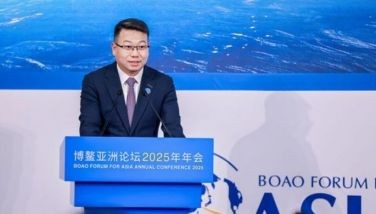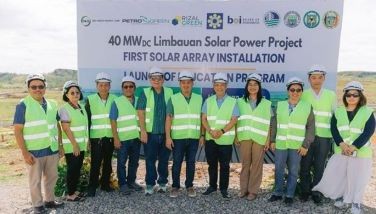Luzon, Mindanao, and the great divide
During the American colonial period, it seemed that majority of Cebu was literally divided into two: the taga-bukid and the taga-lungsod, and the physical boundary was the train tracks. So on one side of the tracks were for the taga-bukid and opposite to this the taga-lungsod. Seems silly now, but this division played a key role in the relationships of people and though not as pronounced today, there are still remnants of this now. This cultural phenomenon separates Cebu, and in fact many parts of the Philippines, usually the north versus the south (similar to political analyst Richard Heydarian's “Southern European” Luzon and “Sub-Saharan Africa” Mindanao).
With the elections already extremely very heated up, many previous friends and allies have once again taken different paths and slinging mud against each other. As recent news reports show, former allies and friends and town mates such as Cebu Vice Governor Hilario P. Davide III and 2nd District Representative Edsel A. Galeos have started with negativities against each other.
It is interesting that not only are the two from the same southern town of Argo, Cebu, but that in the town’s 400 years history the two families have not had any serious conflicts or disagreements. In many instances such clashes between families from the same area do happen a lot, but in many cases, often at a later date realignments take place once more. And the cycle continues in succeeding elections.
If one looks at the geographical origins of candidates, even of those coming from the same municipality or city, one discovers that there is pattern of differences from where candidates are. The first Cebu provincial election, for instance, was between Julio Llorente and Juan F. Climaco. While Llorente was half-Argawanon (and thus technically from the south), he was considered a Spaniard as his father was a peninsular. On the other hand, Climaco was Chinese mestizo with a longer Filipino connection. Climaco won. Governors like Sergio Osmeña were obviously city folk, Dionisio Jakosalem was from the south, Manuel Roa and Arsenio Climaco from the city, then Mariano Jesus Cuenco and Sotero Cabahug from Carmen and Mandaue, respectively.
While most previous governors of Cebu identified with Cebu City as their “hometown”, most still had their provincial bases and would court the residents of these towns during election. And more often than not, they usually continue to identify as coming from the north or the south.
The north-south divide in the Philippines refers to the noticeable disparities --economic, political, social, and even cultural-- between regions in the northern part of the country (especially Luzon) and those in the southern parts (mainly Mindanao, but also parts of the Visayas). Experts suggest several reasons contribute to this divide: southern areas like Mindanao remained largely outside Spanish control, especially Muslim-dominated regions, leading to less integration into the national framework; uneven development, where infrastructure and public services have historically been more developed in Luzon, especially in Metro Manila which receives the largest share of government funding and investments, while Mindanao and some parts of the Visayas have lagged in terms of industrialization, education, healthcare, and social services. And many more.
Experts and politicians have often debated whether this geographical disparity is really true or if some just use it to excuse the nation’s poverty. But it cannot be denied that when Duterte won in 2016, the Bisaya, those coming from the south, were the proudest. When Marcos Jr. won, many of his supporters identified as solid north. The north-south divide is rooted in historical neglect, uneven resource distribution, armed conflict, cultural differences, and long-standing political inequalities. Recent efforts such as the Bangsamoro Autonomous Region in Muslim Mindanao (BARMM) aim to correct some of these imbalances, but the divide remains a major national issue.
- Latest



















